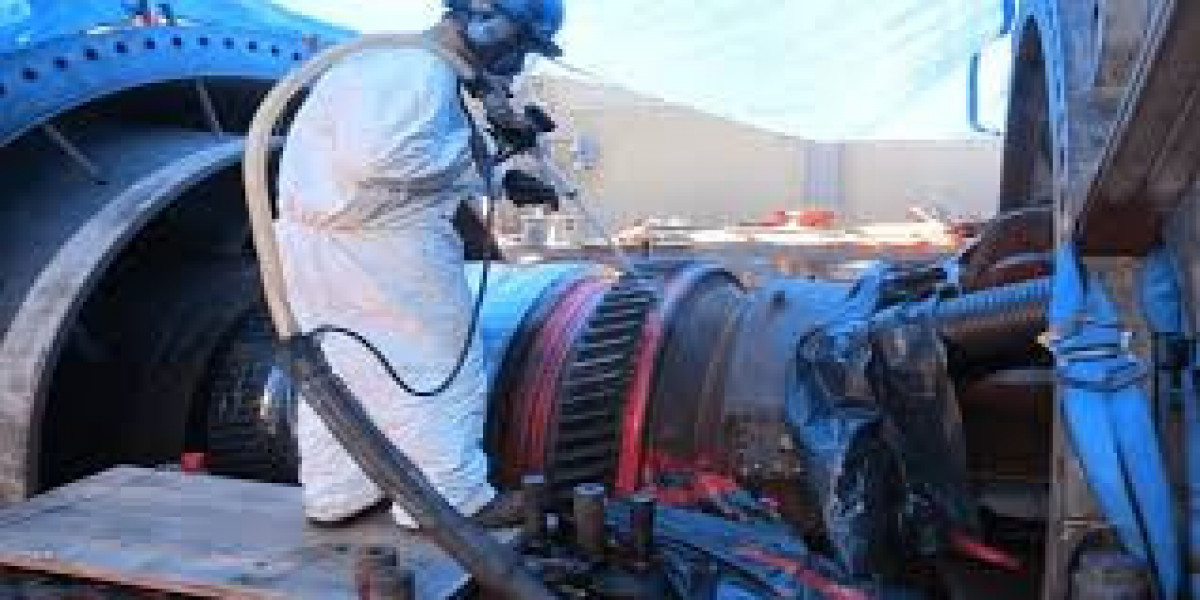How Dry Ice Blasting Improves Cleaning Efficiency Without Damaging Surfaces
In industrial environments, effective cleaning is critical—not only for aesthetics but also for equipment performance, safety, and regulatory compliance. Traditional cleaning methods like sandblasting, water pressure systems, and chemical solvents have long been the standard, but they come with drawbacks: surface wear, moisture issues, secondary waste, and environmental concerns.
Dry ice blasting has emerged as an alternative that addresses many of these challenges. It offers a clean, fast, and non-damaging solution for removing contaminants from surfaces, machinery, and equipment. As more businesses prioritize efficiency and sustainability, dry ice blasting is becoming the preferred cleaning method across various industries.
What Is Dry Ice Blasting?
Dry ice blasting is a form of media blasting that uses solid carbon dioxide pellets as the cleaning medium. These pellets, also known as dry ice, are propelled at high velocity using compressed air. When the pellets hit a surface, they rapidly transition from a solid to a gas—a process known as sublimation.
The combination of thermal shock, impact, and expansion lifts contaminants off the surface without damaging it. Unlike other blasting methods, dry ice blasting does not involve abrasive materials, water, or hazardous chemicals, making it safe for delicate equipment and environmentally sensitive operations.
The Science Behind the Process
The cleaning effect of dry ice blasting relies on three simultaneous actions:
The kinetic energy from the high-speed pellets loosens surface debris.
The extreme cold of the dry ice causes materials like grease, paint, and rust to contract and lose adhesion.
The sublimation of the pellets into CO₂ gas creates a micro-explosion at the surface level, which helps lift the debris away.
This method not only cleans thoroughly but also leaves no residue behind, as the dry ice evaporates entirely on contact.
Major Benefits of Dry Ice Blasting
Dry ice blasting offers several distinct advantages over conventional cleaning methods:
It is completely dry, making it suitable for electrical components and moisture-sensitive environments.
It does not abrade or damage surfaces, which is especially useful for equipment with fine tolerances or soft coatings.
It generates no secondary waste, unlike sand or water blasting, which often requires additional cleanup.
It reduces equipment downtime, as many components can be cleaned in place without disassembly.
It avoids the use of harmful chemicals, improving workplace safety and environmental compliance.
These benefits not only enhance operational efficiency but also help extend the life of machinery and reduce the risk of production interruptions.
Common Uses Across Industries
Dry ice blasting is used in a wide range of applications due to its versatility. Some of the most common industries where it's applied include:
Manufacturing and fabrication: Used to clean production equipment, molds, and conveyor systems without halting operations.
Food and beverage: Removes baked-on residue, grease, and biofilm from processing equipment in compliance with food safety regulations.
Electronics and electrical systems: Cleans control panels, motors, and transformers without moisture or damage.
Automotive and aerospace: Strips paint, cleans engine parts, and maintains tools and dies with precision and care.
Restoration services: Efficiently removes mold, soot, and smoke damage from buildings and structures after fire or flood events.
Because it can be used safely around electronics and fragile surfaces, dry ice blasting is a go-to solution in high-precision environments.
Environmental and Safety Considerations
Dry ice blasting is often considered a green cleaning method. The carbon dioxide used in the process is typically reclaimed from industrial emissions, meaning it does not add new CO₂ to the atmosphere. There is also no wastewater, no chemicals to dispose of, and no hazardous materials involved.
That said, safety precautions are still necessary. Dry ice is extremely cold and can cause burns if handled without proper protection. CO₂ gas can also displace oxygen in poorly ventilated areas, so adequate airflow and monitoring are essential.
Operators must be trained to handle the equipment correctly, wear appropriate protective gear, and follow established safety procedures to prevent accidents.
Is Dry Ice Blasting Right for Your Operation?
Dry ice blasting is ideal for facilities that require non-invasive, residue-free cleaning. It is especially valuable where downtime is costly or where traditional cleaning could harm equipment.
If your operations involve high-value machinery, sensitive electronics, or regulatory cleanliness standards, dry ice blasting offers a strong return on investment. While the initial setup may require specialized equipment and trained staff, the long-term benefits often outweigh the upfront costs.
Conclusion
Dry ice blasting is not just another cleaning method—it’s a transformative solution for industries seeking cleaner, faster, and safer ways to maintain their operations. With its ability to remove contaminants without abrasion, water, or chemicals, it is quickly becoming the preferred method for forward-thinking businesses.
As industrial standards continue to evolve and environmental responsibility becomes more important, dry ice blasting is positioned as a reliable, efficient, and sustainable choice for modern cleaning challenges.








